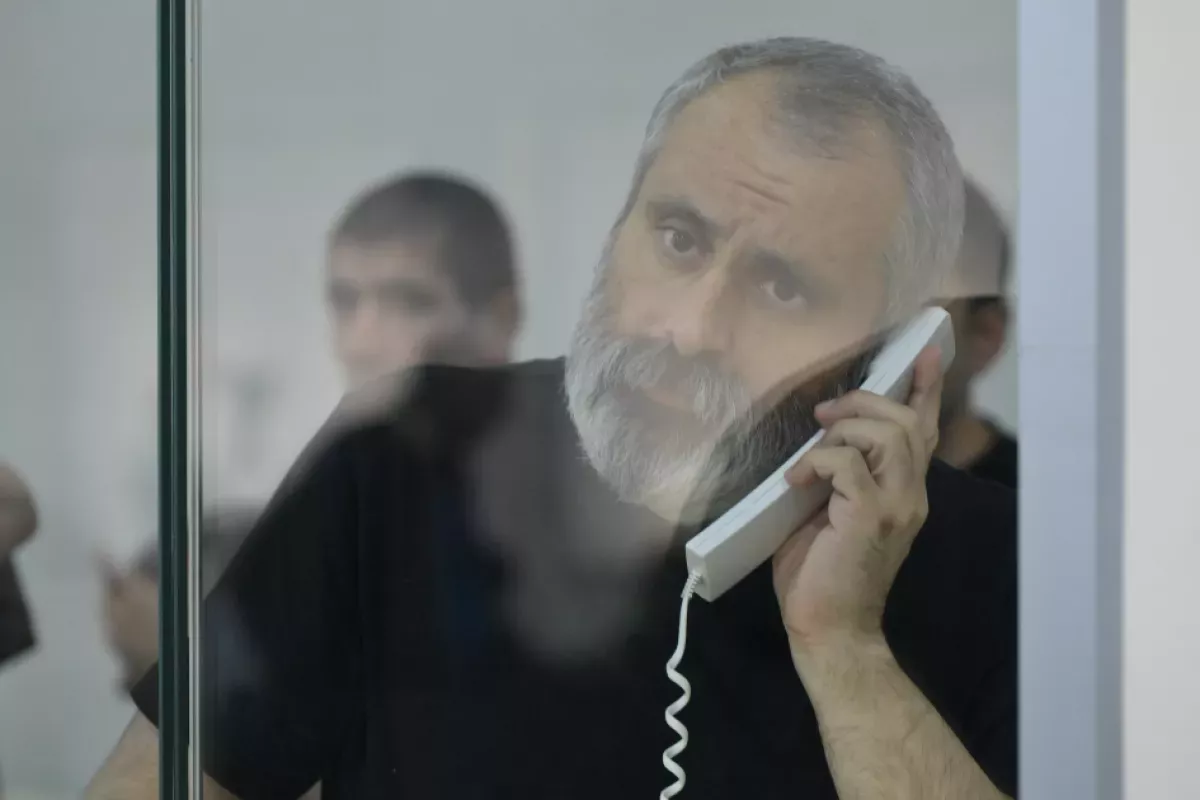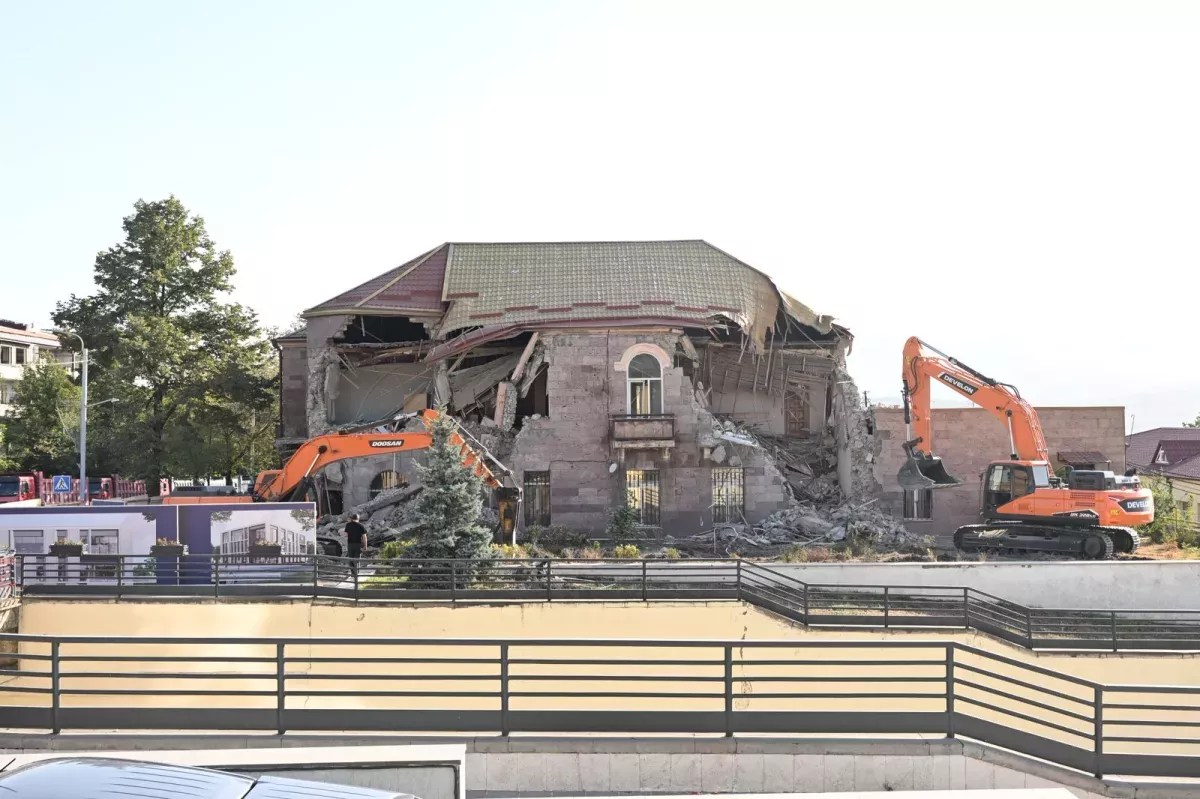Azerbaijan clears Khankendi of separatist remnants From occupation to revival
On September 2, the demolition of the so-called “ministry of foreign affairs” building of the separatist regime began in Khankendi. This carries symbolic significance, as the day marks the anniversary of the proclamation of the illegal separatist regime once established on the previously occupied territories of Azerbaijan.
This building was previously used for meetings with pro-Armenian foreign politicians who visited the then-occupied territories. “Visas” for entry into these areas were issued there, and illegal accreditation of foreign journalists was conducted, all of which demonstrated blatant disregard for the state sovereignty of Azerbaijan.
The notorious former “foreign minister” of the separatist regime, David Babayan, along with others now on trial at the Baku Military Court, once declared in this very building that the Azerbaijani flag could be raised in Karabakh only in one case—if an embassy were opened there.

However, history—a harsh and relentless, yet just, judge—has put all matters straight: today, the Azerbaijani flag not only flies in every corner of liberated Karabakh, but the representatives of the Karabakh junta are now giving confessional testimonies at the Baku court. All of this became possible thanks to Azerbaijan’s victory in the 44-day war of autumn 2020 and the brilliantly executed one-day anti-terrorist operation in September 2023, which allowed the country to fully restore its sovereignty and territorial integrity.
Back in September 2021, during his speech at the annual general debate of the 76th session of the UN General Assembly at the level of heads of state and government, President Ilham Aliyev called on UN member states and the Secretariat to refrain from using legally non-existent and politically biased names when referring to Azerbaijani territories, noting that such terminology is manipulative.
“Azerbaijan resolved the 30-year-long conflict and restored its territorial integrity and historical justice by military-political means. The Nagorno-Karabakh conflict was left in the past. There is no administrative territorial unit called Nagorno-Karabakh in Azerbaijan. We have created Karabakh and Eastern Zangazur economic zones by the Presidential decree signed on 7 July this year,” declared the Azerbaijani president.
Unfortunately, in Yerevan, the “office” of the former separatist junta in Karabakh still exists, headed by Samvel Shahramanyan—the ex-leader of the now-defunct separatist enclave, who, notably, signed the document dissolving the self-proclaimed entity.
This raises serious questions for Baku, as the presence of a “bureau” of the malignant phenomenon called “separatism” in the Armenian capital directly contradicts the officially declared intent of the Armenian authorities to sign a comprehensive peace agreement with Azerbaijan, the initialling of which took place on August 8 this year in Washington in the presence of the leaders of the three states—Ilham Aliyev, Donald Trump, and Nikol Pashinyan.
Notably, this source of separatism fuels the illusions of a segment of Armenian society about a possible revenge, as evidenced by today’s provocative statement from the so-called “national assembly of Artsakh,” which contains, to put it mildly, absurd calls regarding the “right to self-determination” of the Armenians of Karabakh and false accusations against Azerbaijan of “committing ethnic cleansing.”
“September 2, 1991, marked the beginning of Artsakh’s statehood. For thirty years, on a solid constitutional foundation and with effectively functioning state and democratic institutions, the people of Artsakh ensured the development of the second Armenian republic. Although the Republic of Artsakh was not internationally recognised, it was a functioning state system and a source of peace and security in the region, respected not only by regional powers but also by various internationally influential centres,” the statement reads. Its main message is that, supposedly, “the Karabakh issue remains unresolved, and the question of Karabakh is not closed.”

All of this once again confirms that revanchist forces in Armenia cannot come to terms with current realities, and, most importantly, with the fact that the Armenian leadership has recognised Karabakh as an integral part of Azerbaijan.
A tangible proof that the true owners have returned to the land of Karabakh is the implementation of the Great Return state programme. As part of this multifaceted process, Azerbaijan is not only restoring and rebuilding the cities and villages destroyed in the Karabakh and East Zangezur economic regions, but also reviving the historical memory of generations.
There is no doubt that on the site of the demolished building of the so-called “ministry of foreign affairs” of the separatist regime, a new administrative building will be constructed in a modern architectural style. This building will house the Main Department of Architecture and Urban Planning of the Karabakh region under Azerbaijan’s State Committee for Architecture and Urban Planning. It will serve as a symbol of dedication to the interests of the Azerbaijani people.








